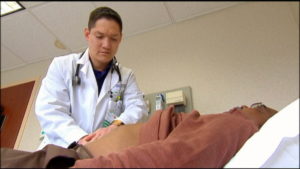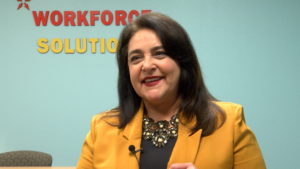Many experts resort to one word when talking about Corpus Christi’s chance for a flourishing economy in the future — potential.
However, they’re encouraged by our present economic climate and believe there will be growth and opportunity over the next 10 to 20 years. They also stress the time to make sure our population is ready for that growth is now.
Over the coming decades, employment trends suggest that there will be the most growth in the industrial, oil and gas and energy sectors. That’s reflective of the boom that’s already happening at the Port of Corpus Christi and in San Patricio County.
“The amount of investments that are being made that are in the billions of dollars aren’t being made because this is a flash in the pan,” said Iain Vasey, president and CEO of the Corpus Christi Regional Economic Development Corporation. “These companies are very, very major investors and they see the long-term benefits for our community, and they see the energy sector being very important for our community for decades to come.”

Even with companies like Cheniere and Exxon pouring major money into these projects, another expert points out that our local economy is very diversified. Dr. Jim Lee, professor of economics at Texas A&M University-Corpus Christi, said there are a wealth of public sector jobs to go along with those in the private sector. That includes some of the area’s largest employers, like the Corpus Christi Independent School District. Around 6,000 people work for CCISD.
Lee also talks about the important contributions of our local military bases, Corpus Christi Army Depot and Naval Air Station-Corpus Christi.
“These two together employ close to 10,000 workers plus civilians. So..that’s why we’ve been fighting very hard to keep their existence,” Lee said.

The demand in those professions will likely continue over the next decades.However, Lee says there is an industry of the future that will have the most demand — healthcare.
As Lee said, “The healthcare industry has been growing tremendously and it’s the biggest non-public sector in Corpus Christi.”
Workforce Solutions of the Coastal Bend agrees with that projection. Monika de la Garza, the agency’s public relations manager, says a recent survey by the Texas Workforce Commission identified healthcare as one of two industries that will have the most future growth in our region. The other is business and professional services.

“We’re talking accountants, auditors, IT personnel, administrative assistants,” de la Garza said. “We’re going to see a growth of about 26 percent through the year of 2026. That’s a big demand for those different occupations.”
One of the main reasons for that demand in business and professional services is the industrial renaissance.
“A lot of those jobs are construction-based or industry-based, but then you’re going to need the back end of that,” de la Garza said. “The people that will support the office, that will support the system, that will support the company.”

As with any regional economy, both de la Garza and Lee believe there will be ebbs and flows. However, they are hopeful that our current economic resurgence is the foundation of a solid future. Dr. Lee has another prediction.
“If everything goes well, we’ll go back to be — if not, number one — a top-five growing city in the United States.”
Another crucial component to the success of our economy will be education. Both experts say that outreach to middle and high school students, who make up the workforce of the future, is going on now. Those programs are focusing on skills, trades and careers on the rise, along with incentives to get them to stay in or go back to school.

